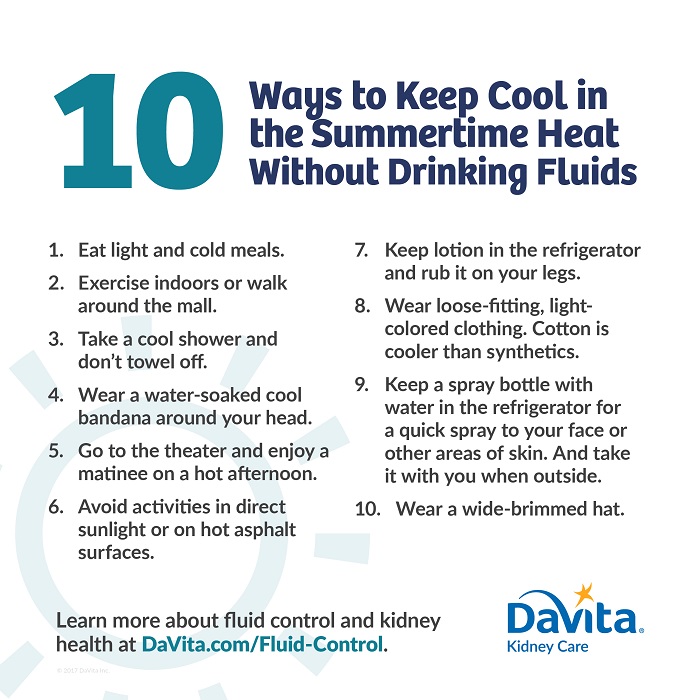Dialysis Patients and Thirst: Friend or Un-Friend?
Something called a “thirst drive” is designed into our human bodies. This is the sensation that kicks in and tells us we need to drink so we do not become dehydrated. It is intended to be protective of our health and well-being.
Dialysis and Thirst
Before starting on dialysis, most of my patients said they never gave much thought to thirst. Now that they are on dialysis and require a fluid restriction, they often say they grow weary thinking about it. And I can see why. Thirst is a helpful “friend” when kidneys work fine and one can drink as much as they desire to quench it. But suddenly it feels like more of an enemy when kidney failure happens. For many patients the health care team advises a fluid limit of one quart (32 ounces) per day. I think one of my younger dialysis patients (who approaches life with a sense of humor) summed up the feelings of many. She said “If thirst was on my social media, I would un-friend it!”
Her comment gave me pause to take a closer look at the thirst dialysis patients must cope with daily. Thirst, the so-called “un-friend”. Can it still serve some useful purpose for people on dialysis with fluid restrictions? Hmm.
True or False Thirst
Not to make this sound like a pop quiz in school, but is your thirst “True or False”?
“True thirst” is triggered when too much salt or high sodium foods are eaten. It can also happen when people with diabetes have high blood sugar levels. If sodium intake is especially high or diabetes is poorly controlled this thirst becomes excessive. There are other physical causes of thirst as well but these two are the most prevalent causes for dialysis patients.
By “false thirst” I am referring to thirst that comes from a person’s emotions and thought processes. Just as stress, anxiety, boredom and depression can cause a person to eat too much (known as “false hunger”), these conditions can also cause a person to take in too much fluid. Don’t let the word “false” deceive you, it is every bit as real as “true” thirst with regard to the negative effect it has on your health.
These thirst drives, though pesky as they are, serve as “friendly cautions” to the dialysis patient. They draw attention to the fact that certain things need tended to in order to have the best health possible.
I know the last thing you want to do is think more about thirst. But consider, just for a few moments, what feeds your thirst drive? It is important to determine the “root cause” so you can take control and steer that drive and not allow it to steer you.
Summertime heat is a driver of thirst. However, there are things you can do besides drink liquids to help control thirst. By staying cool you can decrease the thirst drive before it kicks into full gear. Try some of these 10 tips for staying cool.

Health Care Team Help
One great step toward taking control is to reach out to your health care team! Perhaps a review of your food choices and eating patterns with your dietitian would help you to set a nutrition goal or two that will decrease your thirst. Maybe a heart to heart chat with your social worker about the thoughts and feelings you are experiencing would open a door to some positive possibilities as they offer support and guidance.
These are just two examples of the many types of assistance available to you at your dialysis center. Your entire dialysis team is ready to help you “satisfy your thirst” for knowledge, insight and empowerment as you manage your health concerns. Please feel free to speak up and reach out to your team.
Check out these 6 Refreshing Smoothies for a Kidney Diet to help quench your thirst on hot summer days.

Recent Comments